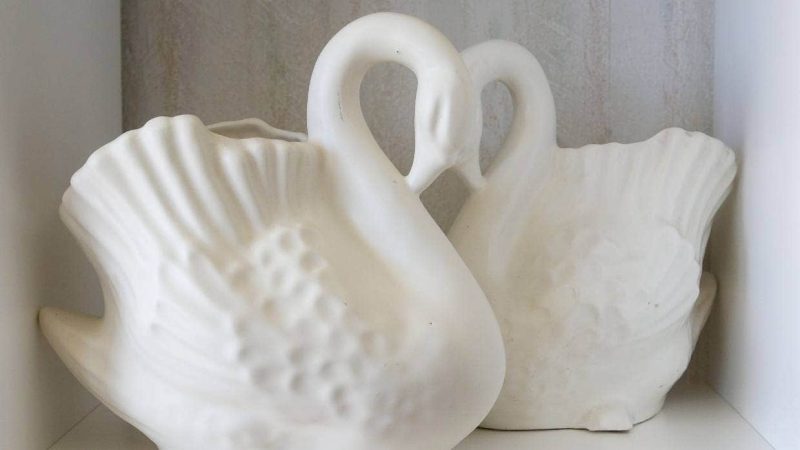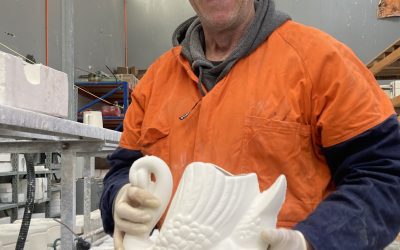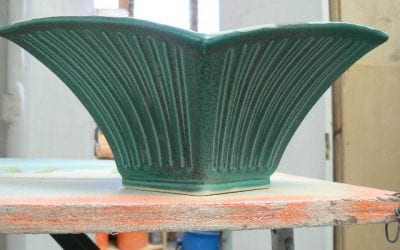The downside of writing about Crown Lynn pottery is that you end up looking at a lot of the stuff.
I haven’t been perusing the listings on Marketplace three minutes before I’m sending off a “is this available?” request for a strange, y-shaped vase in the classic Mid-Century matte white glaze the pottery is most famous for.
This is how you turn into a Crown Lynn collector.
Once you’ve bought everything you can, you start “weeding things out that don’t suit your aesthetic”.
“That’s how I started selling bits and pieces, to generate the money to buy more.”
A POTTED HISTORY
It could be an expensive habit, but the beauty of collecting Crown Lynn is that there’s a style, price range and period for everyone.
Founded in 1854, the pottery operated for 135 years. In that time it created thousands of patterns (the designs on table ware) and shapes (vases and decorative items), first as the Amalgamated Brick and Pipe Company, later as Crown Lynn and brand names, like Kelston and Titian.
Early trickle-glazed Ambrico pieces are highly collectable and it’s still possible to find them at decent prices in car boots and swap pages like Crown Lynn For Sale and Wanted and Crown Lynn, Buy, Sell & Swap – The Original. I found one on Marketplace for $28.
During the 30s, 40s and 50s, Crown Lynn became the Government’s pottery, supplying the armed services, hotels and railways – these simple commercial patterns are incredibly collectable.
It also started making the now coveted (and therefore expensive) Wharetana ware and the collectable matte white and black slip-cast vases – including those gorgeous swans – they are most famous for.
Out of print now, Valerie Monk’s Crown Lynn Collector’s Handbook and Gail Henry’s New Zealand Pottery Commercial and Collectable have a better overview of Crown Lynn than my potted history could provide. Hunt them out at your library.
WHICH ARE YOU?
According to those in the know, there are three kinds of Crown Lynn collectors:
The nostalgic buyer, who likes retro look items and might have a quirky vintage aesthetic, or wants to share the same homely feelings they get from Crown Lynn patterns like Autumn Splendour, Bamboo and Aztec with their own kids.
They’re found trawling the op-shops for that one bread plate or tea cup they’re missing.
The “mid range” collectors, with shelves or mantels dotted with swans, matte white or black slip cast vases.
They’re most likely found on TradeMe, bidding hard for that conch shell vase or 1950s urn or saving up to splurge on another large white, male swan vase.
The big guns, serious collectors with glass cabinets full of rare hand thrown vases and Dorothy Thorpe ball handled tea sets, who think nothing of dropping $4600 on a one-of-a-kind Wharetana biscuit barrel, like the one in Cordy’s estate sale of the late Ngaire Hart’s extensive Kiwiana collection, in May.
New Collectors have to “decide what they want to collect,” says researcher and collector Ev Williams, who creator of newzealandpottery.net and Crown Lynn: Crockery of Distinction (along with the Crown Lynn Skite Site, a great place to get a feel for collecting).
“What attracts them initially? Is it the hand potted? That’s very expensive. That’s what the big guns get.
“But there are plenty of beautiful, darling little miniature vases. You can find them for $5, no problem.”
WHERE TO START
There are still rare gems to be found at op-shops, school fairs and garage sales, says Jeff Elston, arguably the Mac Daddy of Crown Lynn collectors, who’s been collecting for 45 years and has more than 40,000 pieces in his collection.
“Not as much as there used to be, but it’s out there.”
Newbies need to “keep their eyes peeled” for bargains.
With about 2700 patterns and many more shapes; from mass-produced dinnerware, to slip-cast vases, to hand thrown art pottery in a range of sizes, colours and glazes, you’ll need to adjust your expectations now if you’re a completist.
Take a look at the Te Toi Uku site and Facebook page, or the encyclopedic newzealandpottery.net, especially the gallery, for an idea of just how huge the range is.
Then make things easy on yourself: pick a pattern, shape or colour, restrict yourself to it. Your bank manager will thank you.
SWAN SONG
The beloved Crown Lynn swan vase actually comes in two shapes – male and female, three sizes – small, medium and large, and several colours including trickle-glazed.
You can expect to pay anything from $150 from a small white swan to $700-$800 for a medium swan – more expensive because they were only made for a couple of years, so there aren’t many of them.
Black swans are even more rare, with mediums fetching up to $900-950.
I couldn’t even find a price for trickle glazed swans, so I dread to think what they’re worth.
Having said that, the market sets the price for such things and a small white swan sold for $400 on TradeMe this week – it pays to research prices before you buy anything.
BOTTOM LINE… OR MARK
Crown Lynn shapes all have numbers on the bottom, from 1, a narrow waisted art deco style vase from the 30s, to 8899, an 80s dish.
My Y shaped vase is 140; a large swan is 170. The numbers on the bottom of a vase or decorative piece you suspect to be Crown Lynn will be a giveaway and stop you shelling out original prices for reproductions or items that look a bit Crown Lynnish but aren’t.
For a comprehensive guide to Crown Lynn’s huge variety of base stamps and stickers, check out newzealandpottery.net’s gallery of images. Some of them are gorgeous little piece of art in their own right.
“Not all Crown Lynn is collectable,” warns Williams.
“Some people find a dessert bowl and think they have hit the jackpot.”
BUY WHAT YOU LOVE
For Williams, who hopes to find and catalogue every pattern and shape one day, collecting Crown Lynn is an act of love. And that’s her biggest tip for collectors just starting out:
“You’ve got to buy with your heart not with your money head.
“People do buy just for investment because [the prices are] going so high so quickly now, which is scary. I’m glad I’ve got what I have, but I’m always on the lookout for more.”












